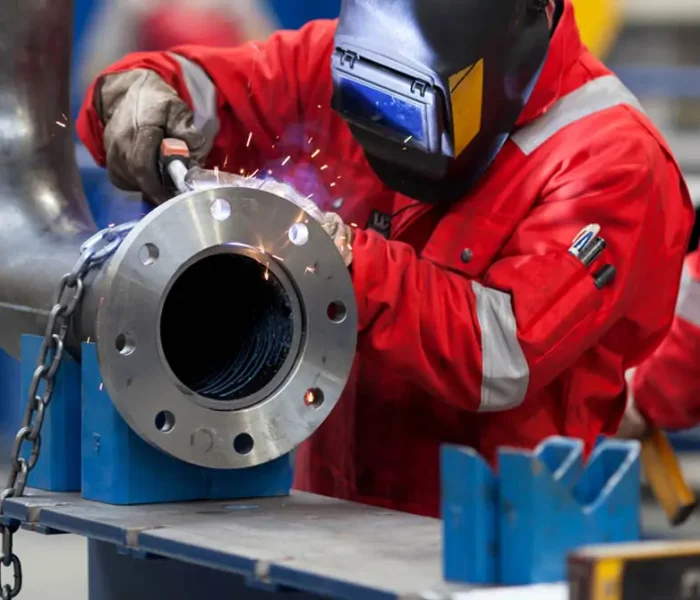Welding and Fabrication in Texas
Welding and fabrication are two critical components of the industrial and construction sectors in Texas. From skyscrapers in the heart of cities like Houston and Dallas to the oil rigs dotting the Gulf Coast, the need for welding and fabrication services is at the forefront of the state’s economic activity. Texas, being one of the largest industrial hubs in the United States, relies heavily on these services to fuel its growth, innovation, and infrastructure. Even sectors like towing services benefit from high-quality fabrication for custom parts and equipment.
In this guide, we’ll explore the importance of welding and fabrication, the different techniques used, the impact on Texas’ industries, and how businesses can benefit from these services. Whether you’re a construction company, a manufacturer, or in need of custom welding, this guide will give you a comprehensive understanding of what welding and fabrication in Texas can offer.

The Importance of Welding and Fabrication in Texas
Welding and fabrication are indispensable for the development and maintenance of Texas’s infrastructure. These processes create a wide range of structures, parts, and tools essential for several industries, including construction, energy, transportation, and manufacturing.
What is Welding?
Welding involves joining two or more pieces of metal using high heat, pressure, or both. The welder melts the metal and fuses the pieces together. Depending on the application, welders use different techniques and materials to ensure a strong and durable bond.
Welding plays a critical role in various sectors. Welders help construct massive oil rigs, repair machinery, and manufacture components. Skilled welders ensure the safety and longevity of these projects, maintaining the high standards that industries in Texas demand.
What is Fabrication?
Fabrication encompasses welding, along with other processes like cutting, bending, and assembling metal. This skill allows businesses to create custom parts and structures suited to specific needs. Fabrication is vital in sectors like the energy industry, heavy manufacturing, and even the artistic community in Texas. Custom fabrication enables industries to build specialized equipment, components, and structures that meet precise specifications.

Types of Welding Techniques Used in Texas
Texas has a wide range of industries that require different welding techniques based on their specific needs. Welders choose each method based on the project’s requirements, material type, and application.
MIG Welding (Metal Inert Gas Welding)
MIG welding is a popular technique that uses a continuous wire fed through a welding gun. The welder melts the wire, which fuses the workpieces together. This method works well in high-speed production environments due to its efficiency. Welders often use it to join thicker materials, particularly in industries such as automotive manufacturing and construction.
TIG Welding (Tungsten Inert Gas Welding)
TIG welding is known for its precision and is ideal for intricate work. It uses a non-consumable tungsten electrode that produces a precise, high-quality weld. Welders often choose this technique for thin materials and applications requiring high-quality, clean welds, such as aerospace, medical equipment, and high-end automotive manufacturing.
Stick Welding (Shielded Metal Arc Welding)
Stick welding, or SMAW, is one of the oldest and most versatile welding techniques. The welder uses an electrode coated in flux, which melts to form a strong bond between metals. Welders use stick welding widely on construction sites and in outdoor environments because it’s portable and effective in windy or remote conditions.
Flux-Cored Arc Welding (FCAW)
Flux-cored arc welding is a process similar to MIG welding, but it uses a tubular electrode filled with flux. This method is highly efficient and is commonly used for heavy industrial applications like shipbuilding, pipelines, and structural welding.
Fabrication Tools and Equipment Used in Texas
Welding is just one component of fabrication. Fabricators rely on various tools and equipment to shape and assemble metal into the desired forms. The quality and precision of these tools directly impact the outcome of the fabrication process.
Some essential tools used in welding and fabrication include:
- Plasma Cutters: Fabricators use plasma cutters to cut metal with high precision. These tools are versatile, allowing work on various thicknesses of steel and other metals.
- Press Brakes: These machines bend metal sheets into specific shapes. Press brakes are essential for creating custom metal components used in manufacturing and construction.
- Laser Cutters: Laser cutters offer unparalleled precision when cutting intricate designs into metal, making them ideal for high-accuracy projects like aerospace components and automotive parts.
- Welding Machines: Specialized equipment is designed for different welding methods, such as MIG, TIG, and Stick welding.
Texas fabricators and welders equip themselves with these tools to ensure they build products that last, meet specifications, and comply with industry standards.
Applications of Welding and Fabrication in Texas
The applications of welding and fabrication services are vast and varied across Texas. Industries that rely on these services include energy, construction, manufacturing, transportation, and more.
Energy Sector
The energy sector in Texas is one of the largest in the country, with a strong presence in oil, gas, and renewable energy. Welding and fabrication are crucial for building and maintaining the equipment that powers the state’s energy infrastructure. From creating offshore oil rigs to repairing pipelines, welding and fabrication ensure that the state’s energy production runs smoothly.
Manufacturing and Industrial Applications
Texas is a leader in manufacturing, with a wide array of industries including aerospace, automotive, and heavy machinery. Welding and fabrication are used to produce high-quality parts and equipment, from large steel frames to precision components. The ability to fabricate custom parts ensures that manufacturing processes in Texas meet the specific needs of different industries.
Construction
The construction industry in Texas is booming, with new buildings and infrastructure projects popping up across the state. Whether it’s welding steel beams for skyscrapers or fabricating custom steel structures for bridges and roads, these services are integral to the successful completion of construction projects.
Transportation
Welding and fabrication are also heavily used in the transportation sector, especially for creating custom parts for trucks, trailers, and other commercial vehicles. Texas is a major hub for the transportation industry, and reliable welding and fabrication services help ensure that vehicles and equipment are up to standard and roadworthy.
Why Welding and Fabrication Matter for Businesses in Texas
Businesses in Texas benefit from welding and fabrication services in numerous ways:
- Customization: Welding and fabrication allow businesses to create custom parts and equipment tailored to their specific needs. Whether it’s a custom piece of machinery or a unique structure, these services ensure that Texas businesses can get the exact components they need.
- Durability: High-quality welding and fabrication ensure that equipment and structures are built to last. In industries like oil and gas, construction, and manufacturing, the durability of welded and fabricated parts is crucial to keeping operations running smoothly.
- Cost-Efficiency: Investing in quality welding and fabrication reduces the likelihood of frequent repairs and replacements. Well-made components last longer and require fewer fixes, ultimately saving businesses money in the long run.
- Support for Local Economy: Welding and fabrication services contribute significantly to the local economy in Texas. Many businesses rely on skilled fabricators and welders for ongoing operations, and these industries provide stable, high-paying jobs that support local communities.
Future Trends in Welding and Fabrication in Texas
The future of welding and fabrication in Texas is bright, driven by technological advancements and innovations in the industry. Some emerging trends include:
- Automation and Robotics: Automation is transforming the way welding and fabrication are done. Robotics can perform repetitive tasks with high precision, reducing labor costs and improving efficiency.
- Advanced Materials: As industries evolve, the need for stronger, lighter materials grows. New welding and fabrication techniques are being developed to work with advanced materials such as high-strength steel, titanium, and composites.
- Sustainability: As more companies focus on sustainability, welding and fabrication services are evolving to meet these demands. Techniques that reduce waste, improve energy efficiency, and use recyclable materials are becoming more common in the industry.
FAQs
1. What industries rely on welding and fabrication in Texas?
Welding and fabrication services are essential in various industries in Texas, including energy (oil, gas, and renewable energy), construction, manufacturing (aerospace, automotive), transportation (trucks, trailers), and infrastructure development. These services are integral for building durable equipment, custom parts, and structures critical to these sectors.
2. What are the different types of welding techniques used in Texas?
Texas utilizes several welding techniques, each suited for specific applications:
- MIG Welding (Metal Inert Gas) for high-speed, efficient production.
- TIG Welding (Tungsten Inert Gas) for precision and intricate work.
- Stick Welding (SMAW) for versatility, particularly in outdoor or remote settings.
- Flux-Cored Arc Welding (FCAW) for heavy industrial applications like shipbuilding and pipeline welding.
3. Why is fabrication important in addition to welding?
Fabrication involves not just welding, but also processes like cutting, bending, and assembling metal components. It enables businesses to create custom parts and structures tailored to specific needs, providing flexibility and precision in various industries such as manufacturing, energy, and construction.
4. How does welding and fabrication impact the local economy in Texas?
Welding and fabrication contribute significantly to Texas’s economy by supporting key industries and creating job opportunities. The demand for skilled welders and fabricators helps build local supply chains and fosters economic growth by providing stable, high-paying jobs, especially in industrial areas.
5. What are the future trends in welding and fabrication in Texas?
The future of welding and fabrication in Texas is shaped by innovations like automation and robotics, which improve efficiency and precision. Additionally, new materials and sustainable practices are gaining traction in the industry, enabling businesses to meet the evolving needs of various sectors while reducing waste and improving energy efficiency.







